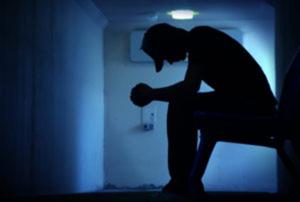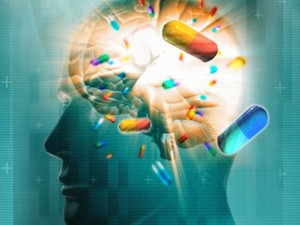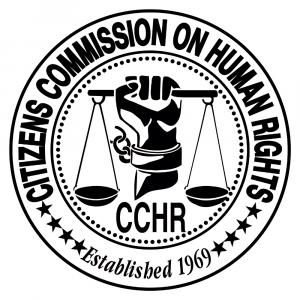Human Rights Group Tells Senate Committee Mental Health Screening of Children and Teens Is Ineffective and Harmful

No screening method can differentiate between the sadness which is very common in teens and deeper depression requiring treatment. Labeling normal teens with a mental disorder changes the way they see themselves and can ruin their lives.

Increased screening results in increased psychiatric drugging of children, exposing them to the drugs’ risks of harmful side effects, including diabetes, movement disorders, aggression, psychosis, mania, suicide and violence.

WARNING: Anyone wishing to discontinue or change the dose of an ADHD drug or other psychiatric drug is cautioned to do so only under the supervision of a physician because of potentially dangerous withdrawal symptoms.

CCHR co-founder, the late Thomas Szasz, M.D., a professor of psychiatry and humanitarian, said: “Labeling a child as mentally ill is stigmatization, not diagnosis. Giving a child a psychiatric drug is poisoning, not treatment.”
Research has found mental health screening results in too many children and teens labeled and drugged for mental disorders they do not have.
The Citizens Commission on Human Rights recognizes that children faced unprecedented and stressful disruptions in their lives during the pandemic. However, we have a serious concern, supported by substantial research, that increased screening of children and at earlier ages, as now called for by mental health providers, will result in many more children being inaccurately diagnosed with mental disorders and further escalate the number of American children prescribed powerful psychotropic drugs, putting them at risk of serious physical and psychological side effects.
Research studies have found mental health screening is ineffective and potentially harmful to children.
Allen Frances, M.D., a psychiatrist and Professor and Chairman Emeritus of the Department of Psychiatry and Behavioral Sciences at Duke University School of Medicine, chaired the task force on the 4th edition of the American Psychiatric Association’s Diagnostic and Statistical Manual of Mental Disorders.
Writing in the Wall Street Journal in 2016, Dr. Francis stated: “Screening for depression is one of those ideas that is terrific in theory but terrible in practice. Proponents see only the potential benefits and remain blind to the many risks. They imagine an ideal world in which troubled teens are accurately identified as depressed or pre-depressed and receive just-in-time care that reduces the burden of illness and the risk of suicide. They fail to imagine the many limitations and unintended consequences that make testing much more harmful than helpful.”
Dr. Francis stated that no screening method can differentiate between the sadness which is very common in teens and clinical depression requiring treatment. He says that teens are “especially tough to diagnose” because their symptoms are fluid and highly responsive in the short run to pressure from family, friends and school. He warns that “mislabeling a teen as mentally ill changes the way they see themselves and can ruin their lives.” He further notes that “medical efficacy in adolescence is questionable and medications may increase the risk of agitation, impulsivity suicide and/or violent behavior.”
The late Karen Effrem, M.D., a well-known pediatrician and researcher, found that increased screening results in the increased psychiatric drugging of children and adolescents, with significant evidence of harmful, even life-threatening side effects, including suicide, violence, psychosis, hallucinations, diabetes, and movement disorders.
A study by researchers at McGill University, published in 2016 in the Canadian Journal of Psychiatry, found after an exhaustive search of medical literature that there was not a single screening tool with even moderate evidence of sufficient accuracy to effectively identify depressed children and adolescents without also mistakenly identifying many non-depressed children and adolescents. They noted that screening leads to the unnecessary prescribing of potentially harmful psychiatric drugs, as well as giving negative messages about their mental health to children who do not have mental health disorders.
That was precisely the case from 1999 to 2012, when an untold number of adolescents were screened for depression using the TeenScreen questionnaire. The screening tool was widely promoted and utilized, even though psychiatrist David Shaffer, M.D., who led the Columbia University team that developed TeenScreen, admitted the screening tool would result in 84 non-suicidal teens being referred for further psychiatric evaluation for every 16 youths correctly identified – a staggering number of false positives. CCHR was instrumental in ending the use of TeenScreen.
Further confirming the lack of evidence of effectiveness in screening, research published in 2017 in BMC Medicine found there have been no randomized, controlled trials, considered the gold standard for research, with any direct evidence of improved health or other beneficial outcomes from depression screening.
The United Kingdom National Screening Committee and the Canadian Task Force on Preventive Health Care recommended against all questionnaire-based screening because of the lack of direct evidence of benefit and the potential harm to patients and waste of resources. The U.S. Preventive Services Task Force did recommend screening of adolescents ages 12 and older, but “with adequate systems in place to ensure accurate diagnosis.”
However, accuracy in psychiatric diagnoses cannot be ensured. A fundamental flaw in the present-day field of mental health is that there are no objective, scientific diagnoses of psychiatric conditions, as there are in physical medicine, a fact which was acknowledged by the former director of the National Institute of Mental Health, Thomas Insel, M.D.
Therefore, what constitutes a child’s “elevated symptoms” requiring treatment is entirely subjective – and can vary from one provider to the next. There is no consistency and no valid standards in the determination of a psychiatric diagnosis and, therefore, no accuracy.
The result of this subjectivity in diagnosing is reflected in the ever-growing number of children and adolescents estimated by mental health providers to need mental health treatment.
CCHR has long recommended that before any rush to judgment about a child having a mental disorder, the child should receive a complete physical exam with laboratory tests to discover any undiagnosed physical condition – illness, infection, injury or other condition – that could account for the child’s behavioral symptoms. If found and corrected, this spares the child from being inappropriately labeled and treated for a psychiatric condition the child does not have.
CCHR further recommends the child should be checked for allergies, food intolerances, nutritional deficiencies, and environmental toxins, which are all known to cause behavioral symptoms.
The diagnosis of a psychiatric condition in a child with a behavioral problem in school often overlooks the fact that the child’s educational needs are not being met, resulting in unwanted classroom behavior. This applies both to children falling behind in their studies and children bored because they are not sufficiently challenged. Screening the child for a mental disorder is the wrong approach. Applying correct educational solutions would prevent children from being diagnosed with ADHD and prescribed stimulant drugs.
As Mary Ann Block, M.D., author of No More ADHD, has stated, ““By taking a thorough history and giving these children a complete physical exam as well as doing lab tests and allergy testing, I have consistently found that these children do not have ADHD, but instead have allergies, dietary problems, nutritional deficiencies, thyroid problems and learning difficulties that are causing their symptoms. All of these medical and educational problems can be treated, allowing the child to be successful, without being drugged.”
In 2020, some 6.2 million American children ages 0 to 17 – roughly one in 12 – were prescribed psychiatric drugs, including antidepressants, antipsychotics, antianxiety drugs and ADHD drugs, according to IQVia, a healthcare data source. This includes 418,000 youngsters 0 to 5 years old. These troubling numbers of drugged youth could dramatically increase with even more widespread screening.
Of note, the number of children and adolescents taking psychiatric drugs has decreased by 8% since 2017. This may reflect a growing awareness on the part of parents and others of both the ineffectiveness and the unwanted side effects of these drugs, which may have led to their refusal to consider giving them to children. The CCHR psychiatric drugs side effect search engine currently lists some 300 warnings from international drug regulatory agencies and research studies on the adverse effects of psychiatric drugs for children 0 to 17 years old.
Half of these warnings pertain to antidepressants’ adverse effects on children, especially suicide and aggressive behavior. The FDA’s most serious black box warning is required on the labels of antidepressants, advising they can cause suicidal thoughts and actions in children and young adults. Nearly 2.2 million children and adolescents ages 0 to 17 are currently taking antidepressants, 35,000 of them the tender ages of 0 to 5.
Researchers led by professor psychology Glen I. Spielmans, Ph.D., analyzed data from antidepressant clinical trials for a study, published in Frontiers in Psychiatry in 2020, that concluded “increasing antidepressant prescriptions are related to more youth suicide attempts and more completed suicides among American children and adolescents.”
In 2017, researchers Martin Plöderl, Ph.D., a clinical psychologist, and Michael P. Hengartner, Ph.D., a senior researcher and lecturer in clinical psychology and psychopathology, concluded: “If you look at the past 10 years, antidepressant rates are associated with increased suicide rates,” adding that antidepressants “most likely cause suicidal behavior in young people” and that the “data strongly suggest that antidepressants can cause suicides and aggressive behavior.”
A study from the Nordic Cochrane Centre and the University of Copenhagen published in the British medical journal, The BMJ, in 2016 also concluded that antidepressants are linked to suicide and aggression in teens and that “children and young people are more likely to think about or attempt suicide while taking antidepressants.”
Peter Breggin, M.D., a Harvard-trained psychiatrist and former consultant to the National Institute of Mental Health, describes antidepressants as neurotoxins because they harm and disrupt the functions of the brain, causing abnormal thinking and behaviors that include anxiety, irritability, hostility, aggressiveness, loss of judgment, impulsivity and mania, which can lead to violence and suicide. He says that the harmful mental and behavioral effects of antidepressants are especially prevalent and severe in children and adolescents.
In draft guidance published in November, the London-based National Institute for Health and Care Excellence advised that antidepressant drugs should not be considered first-line treatment for any patients. Instead, those with depression should be offered and able to choose from a variety of treatment options, including non-drug options. CCHR supports this shift in thinking to non-drug solutions to children’s emotional problems.
Another 829,000 children ages 0 to 17 are prescribed antipsychotic drugs, 31,000 of them age 0 to 5 years, for ADHD, aggression, mood swings, and conduct problems. The CCHR psychiatric drugs side effect search engine currently lists 42 research studies and 13 drug regulatory agency warnings about adverse effects of antipsychotic drugs for children and adolescents. Among the many adverse effects, the drugs are widely known to cause weight gain, diabetes, cardiovascular problems, and the risk of sudden death.
A study published in JAMA Psychiatry in 2018 found that children and teens taking higher doses of antipsychotics were 1.8 times more likely to die for any reason, 3.5 times more likely to die unexpectedly (excluding overdose), and 4.29 more likely to die from cardiovascular or metabolic problems.
Antipsychotic drugs have long been linked with akathisia, a state of restlessness and agitation that can induce suicidality or violence in children. David Healy, M.D., a psychiatrist and professor of psychopharmacology, stated in a 2009 interview for a blog on the Psychology Today website that antipsychotics are universally recognized as causing akathisia and that akathisia is recognized as increasing the risk of suicidality and violence. He stated that since the introduction of antipsychotics, the rates of suicide have risen 10- or 20-fold.
The drugs are also known to cause the devastating neurological damage called tardive dyskinesia, an involuntary jerkiness of the face, tongue, torso and limbs that can be disabling and permanent and may also lead to suicide.
An analysis of those aged 10-18 found that antipsychotic use was associated with a 50% increase in the risk of developing type 2 diabetes. This was higher for youth who used antidepressants and antipsychotics concurrently.
For all the risk to children of psychiatric drugs, research studies show the drugs are largely ineffective and do more harm than good.
In a study recently published in The BMJ Drug and Therapeutics Bulletin, researchers reviewed meta-analyses of studies of newer generation SSRI and SNRI antidepressants. They found no clinically significant difference in measures of depression symptoms between children and adolescents treated and not treated with antidepressants. They noted that published accounts of clinical studies involving adolescents exaggerated benefits and understated adverse events, such as by coding suicide attempts as “mood swings.”
In a 2018 study published in Frontiers in Psychiatry, Michael P. Hengartner, Ph.D., a senior researcher and lecturer in clinical psychology and psychopathology, concluded after thoroughly examining the medical literature that antidepressants are largely ineffective and potentially harmful.
Researchers, led by Paul W. Andrews, Ph.D., a professor psychology and evolutionary biologist, analyzed previous studies to determine the overall physical impact on the human body of antidepressants that target serotonin. Serotonin regulates emotion, development, nerve cells, attention, electrolyte balance and reproduction. The study, published in Frontiers in Psychology in 2012 found that antidepressants generally do more harm than good by disrupting a number of adaptive processes regulated by serotonin.
Jose Luis Turabian, M.D., Ph.D., reviewed the medical literature and concluded in a study, published in 2021 in the Journal of Addictive Disorders and Mental Health, that psychiatric drugs can lead to a structural remodeling of the brain that adversely affects emotions and other aspects of mental function and may become irreversible. He says that the drugs block the expression of feelings, affect the problem-solving process, and make the person passive.
Decades of increasing mental health screening and the drugging of children with mind-altering psychotropic drugs has done nothing to reduce the rate of child and adolescent suicide, reduce school violence, or improve students’ educational performance, but has exposed children to substantial harm.
There are global concerns about a growing dependency upon a biological approach to treating mental health issues. In 2017, Dainius Pūras, the United Nations Special Rapporteur on the right to physical and mental health, reported: “There is now unequivocal evidence of the failures of a system that relies too heavily on the biomedical model of mental health services, including the front-line and excessive use of psychotropic medicines, and yet these models persist.”
A 2020 report from the World Health Organization (WHO) criticizes the mental health field’s “entrenched overreliance on the biomedical model in in which the predominant focus of care is on diagnosis, medication and symptom reduction while the full range of social determinants that impact people’s mental health are overlooked, all of which hinder progress toward full realization of a human rights-based approach.”
The WHO calls for holistic mental health services to replace today’s narrow focus on the diagnosis and drugging of individuals to suppress symptoms, a mental health approach that results in “an over-diagnosis of human distress and over-reliance on psychotropic drugs.”
CCHR’s co-founder, the late Thomas M. Szasz, M.D., a professor of psychiatry and humanitarian recognized by many academics as modern psychiatry’s most authoritative critic, wrote: “Labeling a child as mentally ill is stigmatization, not diagnosis. Giving a child a psychiatric drug is poisoning, not treatment.”
CCHR advocates against screening, which experts have proven does not reduce the burden of mental health issues or the risk of suicide in children and teens, but does lead to mislabeling normal children and prescribing them psychiatric drugs that are harmful to them.
CCHR supports evidence-based non-drug and educational solutions for youth mental health issues and public funding directed to programs utilizing those solutions, handling the underlying causes of children’s behavioral problems instead of compounding their problems with psychiatric labels and drugs that are proving to do more harm than good.
Anne Goedeke
Citizens Commission on Human Rights, National Affairs Office
+1 202-349-9267
email us here
Visit us on social media:
Facebook
CCHR Int: Childhood Is Not a Mental Disorder
Legal Disclaimer:
EIN Presswire provides this news content "as is" without warranty of any kind. We do not accept any responsibility or liability for the accuracy, content, images, videos, licenses, completeness, legality, or reliability of the information contained in this article. If you have any complaints or copyright issues related to this article, kindly contact the author above.

